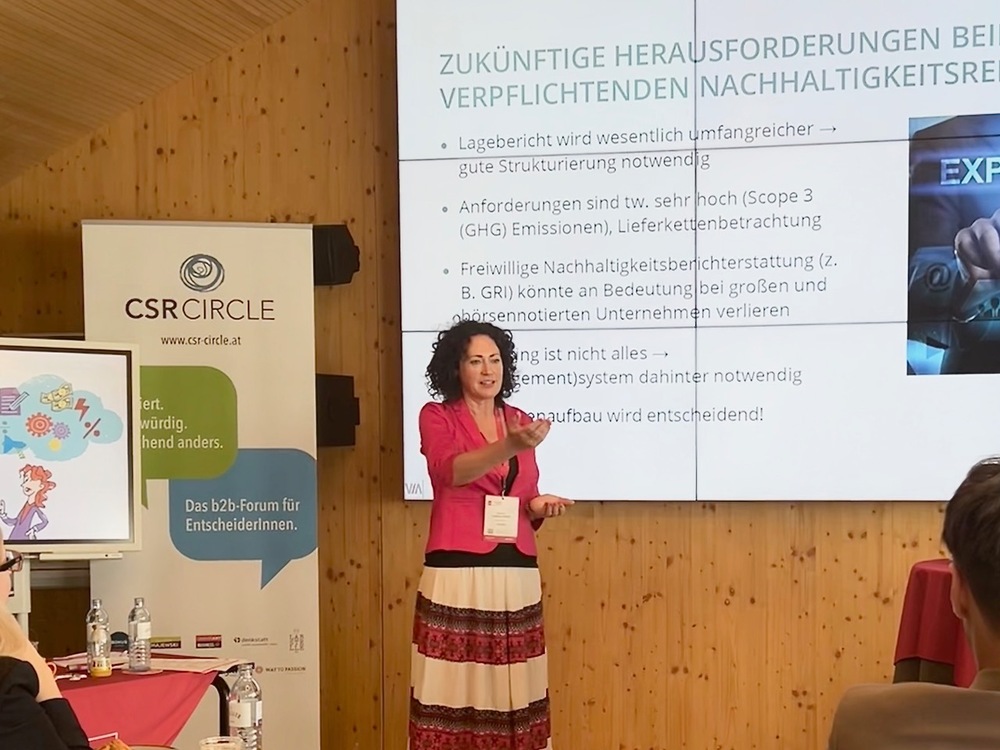The Green Bond Board of the Republic of Austria
The "imh Sustainable Finance Conference" was recently held in Vienna, and I was the technical chair. The topics covered ranged from politics - the Ministry of Climate Action, Environment, Energy and the Environment Agency Austria - to presentations by the Financial Market Authority, the Austrian Control Bank and the Austrian Development Bank, and culminated with the Austrian Ministry of Finance reporting on green innovations in public finance.
The event provided a unique opportunity to network with peers and discuss the latest developments in sustainable finance. Other exciting presentations and updates included DORDA lawers, d-fine Austria, refinq, Finum, OIKOCredit and the WWF, as well as best practice examples from the banking sector.
For the Republic of Austria, the market for sustainable financing is an important element in achieving Austria's ambitious climate goals. Green finance generates additional capital from the private sector to support Austria's sustainable development on the path to decarbonization.
Republic of Austria leads the world
The first green bond was issued in May 2022 with a volume of EUR 4 billion and a maturity until 2049, marking it as the second-longest maturity among all outstanding EUR Sovereign Green Bonds. This was followed in October of the same year by the world's first issuance of a Green Treasury Bill by a sovereign, with a placed volume of EUR 1 billion through an auction. Additionally, the issuance of Green Commercial Paper began in March 2023.
This achievement makes Austria the first country in the world to issue green commercial paper as part of green short-term financing—a remarkable milestone! As a result, Austria positions itself as a global leader in sustainability, boasting the largest share of green spending worldwide compared to other government green bond issuers, measured as a percentage of GDP. (Sources: Eurostat, DMOs, and finance ministry websites).
According to the Austrian Green Bond Framework, which aligns with the process guidelines of the Green Bond Principles published by the International Capital Market Association (ICMA), 3.0 percent of Austrian federal spending for 2022 is classified as green, representing approximately 1.1 percent of GDP.
Austrian Green Bond Framework
The current green framework fosters the development of both domestic and international markets for green financing across short-term and long-term maturities. This approach broadens the investment options for those interested in sustainable investments and allows Austria to further diversify its investor base. As long as this framework remains in effect, approximately 20 percent of eligible green issuances are allocated to green short-term financing instruments, such as green treasury bills, green commercial paper, and green deposits. For 2023, the available issuance volume for green short-term instruments is approximately EUR 1.25 billion, while the medium- and long-term segments have an issuance volume of around EUR 4.25 billion. The total volume of eligible green issuances will always be at least equal to the total amount of all outstanding green federal securities. This indicates that Austria has a substantial share of green budget expenditures and already possesses significant expertise in financing green projects.
Green Bond Board
An interministerial Green Bond Board (GBB) ensures the thorough evaluation and selection of eligible green expenditures. The GBB, chaired by the Austrian Federal Financing Agency (OeBFA), includes senior representatives from the Federal Ministry of Finance and the Federal Ministry for Climate Action, Environment, Energy, Mobility, Innovation, and Technology. The established guidelines require that the proceeds from the Green Federal Securities are part of the federal government's total borrowing. Consequently, eligible green expenditures include budget spending from the previous year (t-1) and the current year (t). As is customary with all green financing, the Republic of Austria will report on all outstanding green short-term instruments at the time of reporting.
Further insights can be found in the next article, which explores the recently published first-ever Green Investor Report.
Original article:
Guest commentary by Dr. Susanne Lederer-Pabst in Börse Social Ausgabe 09/2023


